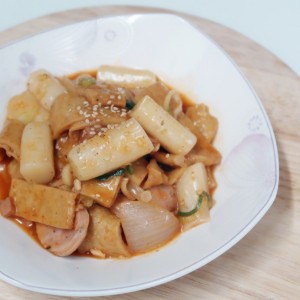
[Video] Making cheese bread that makes you cry
I made cheese bread for cheese lovers.
It's delicious to rip it off as soon as it comes out of the oven, and it's so delicious to cut it and bake it like toast!!!
You can watch the cooking process comfortably through the video.
*On mobile, go to https://youtu.be/U-zW9Kxo6Vc and check it out!
(You can search "Cheese Bread, Late Night Bread" on YouTube.)
6 serving
Within 999 minutes

심야식빵
- Ingredients
-
-
Strong flour300g
-
Sugar15g
-
Salt5g
-
Instant Dryist4g
-
Milk220g
-
Slice cheese8~9piece
-
- Video
-
- Cooking Steps
-
STEP 1/9Sift the flour and make a hole in the middle of the flour so that the sugar, yeast, and salt do not touch each other.STEP 2/9Start kneading by pouring the milk in half.STEP 3/9When it's somewhat lumped together, add butter and knead it in earnest. If you hit the dough on the table or hit it as if you were washing it, the dough will proceed.STEP 4/9When the dough surface becomes smooth and gluten is formed enough to show fingerprints and does not break easily when the dough is stretched, the dough is completed. Roll the dough round and cover it with plastic so that it does not dry, and then perform the first fermentation in a warm place.STEP 5/9If the volume increases by 2-3 times and stretches like a spider web when the dough is lifted, the first fermentation is completed. Beat the dough with your fist to drain the gas.STEP 6/9Put the dough on a workstation, divide it into three parts, and circle it, and cover it well with plastic for about 15 minutes at room temperature.STEP 7/9After completing the intermediate fermentation, roll each dough with a rolling pin, then place 2-3 slices of cheese on top and roll. You have to pinch the joints well to seal them so that they won't come loose later.STEP 8/9After panning in a bread pan, perform a second fermentation in a warm place.STEP 9/9Bake for about 30 minutes in a preheated oven at 170-180 degrees to complete!*Take out the milk in advance or microwave for about 20 seconds to prepare it slightly warm. If it's too cold, it doesn't help with fermentation *Remove the slice cheese from the refrigerator at the beginning of the medium fermentation and leave it at room temperature. If it's too cold, it doesn't help fermentation. *You can make it easier if you put it in a large bowl when you knead it.
- Japchae Recommended recipe
-
-
1
 Mushroom japchae that can be a great side dish4.82(22)
Mushroom japchae that can be a great side dish4.82(22) -
2
 a vegetarian 'japchae' without meat; a recipe for non-soggy4.90(132)
a vegetarian 'japchae' without meat; a recipe for non-soggy4.90(132) -
3
 Bean sprout japchae spicy and crunchy simple steamed dish4.87(46)
Bean sprout japchae spicy and crunchy simple steamed dish4.87(46) -
4
 One pan japchae that doesn't stir-fry the ingredients separately5.00(17)
One pan japchae that doesn't stir-fry the ingredients separately5.00(17)
-
- stir-fried Rice Cake Recommended recipe
-
-
1
 [Simple home cooking] 90% synchro rate, making Shinjeon tteokbok4.75(166)
[Simple home cooking] 90% synchro rate, making Shinjeon tteokbok4.75(166) -
2
 Golden recipe for tteokbokki. If you do it like this, you'll suc4.88(395)
Golden recipe for tteokbokki. If you do it like this, you'll suc4.88(395) -
3
 Ketchup tteokbokki. Making spicy tteokbokki. Eye snacks4.91(53)
Ketchup tteokbokki. Making spicy tteokbokki. Eye snacks4.91(53) -
4
 The tteokbokki at the cart bar is made with garaetteok and stron4.91(33)
The tteokbokki at the cart bar is made with garaetteok and stron4.91(33)
-